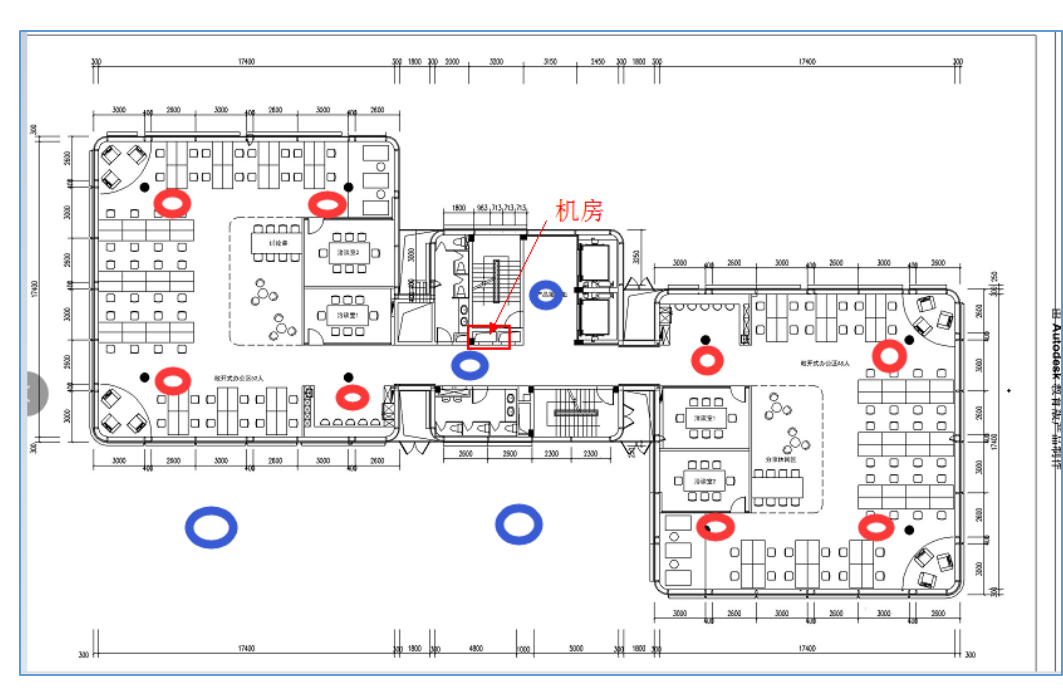Did you know the first WiFi network dates back to 1971? ALOHAnet utilised a UHF antenna array, as there were no frequencies for computer to computer communication in the 70s. It paved the way for the more modern 802.11 protocol in 1997, that had a whopping speed of 2 Mbit/s. Our modern day WiFi 6 (802.11ax) has a theoretical maximum speed of 9608 Mbit/s, quite the difference!
Delivering this speed without blind spots can be a challenge. Read on to find out how technology from ManageEngine, Grandstream and WatchGuard help resellers design effective WiFi networks.
As with most projects, the initial plan is important before deploying access points. All buildings and rooms will vary when it comes to the total quantity of access points required to fully cover the area. A good method for doing an initial scope, is to review the layout and turn on a test access point. It doesn’t have to be the actual unit being installed, it’s just to check attenuation present. Then use a tool / app such as the WiFi Analyzer and Surveyor offered for free by ManageEngine. The tool is handy as it gives an idea of signal strength in different areas and measures any possible interference. Signal strength is measured in dBm (decibel milliwatts). The closer the value is to 0dBm, the better the speed will be:
- Between 0dBm and -50dBm – Excellent signal strength
- -60 dBm – Reliable and good signal strength
- -70 dBm and less – Not a reliable signal
Further distance from an access point will worsen its dBm value. When the signal starts to become unreliable, it is time to add an extra access point to cover the new area in the space. As well as distance from the access point, there is another key disruptor to the dBM value – namely objects, walls and us! Some example attenuation as estimated by IBWAVE:
| 2.4GHz | 5GHz | |
| Concrete – Heavy | -22.792 | 44.769 |
| Lime Brick | -4.295 | -7.799 |
| Dry Wall Partition | -5.388 | -10.114 |
| Chip Board | -0.463 | -0.838 |
As you can see, experiencing 5GHz WiFi through a heavy concrete wall would be less than ideal. Humans can also get in the way of wireless signals; we are mostly made of water after all! The last missing piece is how many devices in the given space will be connecting to their closest access point. This is quite simply what concurrency we need to cater for mobile phones, smart devices, computers, etc. Just make sure the access point model can handle the load at any given time. The finished plan may look a little something like this:

Finally, with a plan in place we have an idea of where to deploy the access points, which units we need and how many we need to cover devices in the given space. Here at Soft Solutions, we offer access points from Grandstream and WatchGuard.
Grandstream’s range
These access points are an excellent fit for any organisation as they are nimble, feature rich and simple to deploy. Grandstream access points also automatically prioritise voice traffic making them an excellent fit for WiFi driven VoIP applications. The Grandstream GWN.Cloud service offers a centralised deployment and management portal to make this extremely simple.
After creating a free account, the MAC addresses of the units can be entered into the Cloud portal to start setting up from a central dashboard. GWN units can be set up individually, or as a Mesh using MIMO technology. The service offers centralised management of the access points, as well as performance monitoring of the network with views into total throughput, users connected and more. No end user traffic is sent to the Cloud and traffic is encrypted with end to end bank grade encryption for added peace of mind when using the service. The GWN range are all powered via PoE (power over ethernet) so bringing the units online is as simple as plugging in an Ethernet cable that is hooked into a PoE capable switch, or using a PoE injector on the cable.
WatchGuard’s offering
WatchGuard offers the only solution to build a Trusted Wireless Environment. Their access points can automatically detect and prevent the six known Wi-Fi threat categories and can be deployed on top of an existing solution (such as a Grandstream deployment) to increase security. Similar to Grandstream, WatchGuard access points are also cloud managed and can offer location-based analytics such as the number of people entering a store and which areas they spend most of their time in.
WatchGuard also offer a site survey service for free to their partners. The results and suggestions for the site are published in a report that makes it easy for resellers to present back to their end users.
Do you need help to look at a potential site? Or do you want to know more about the Grandstream or WatchGuard Wi-Fi solutions? Beam us a message for more!
